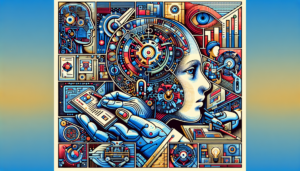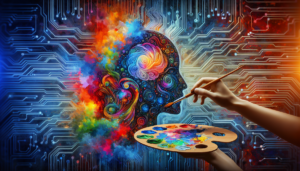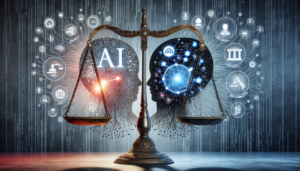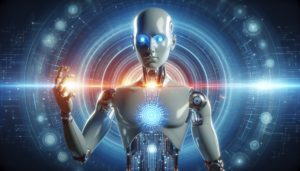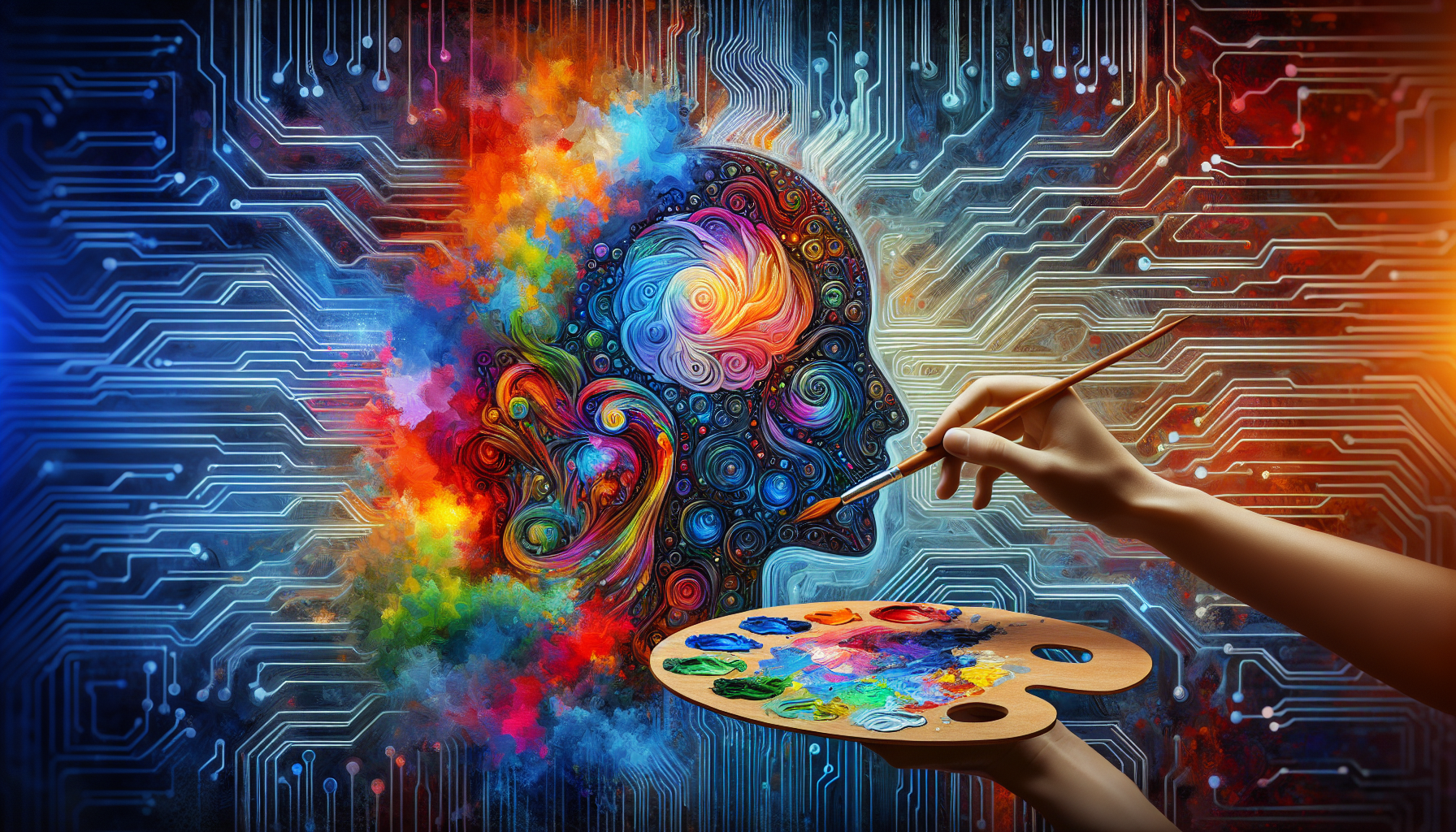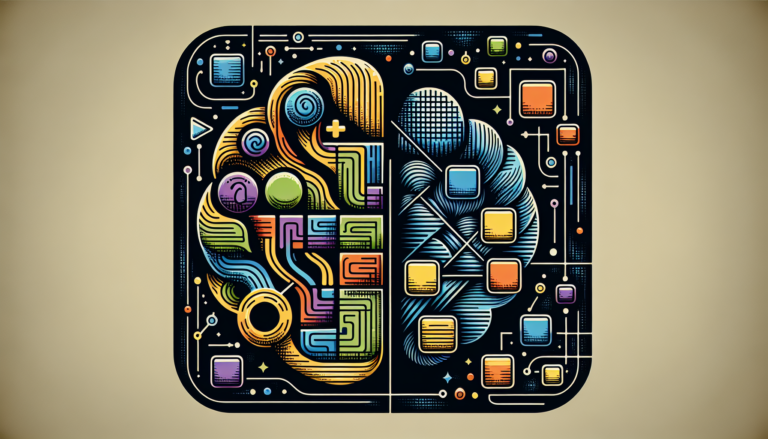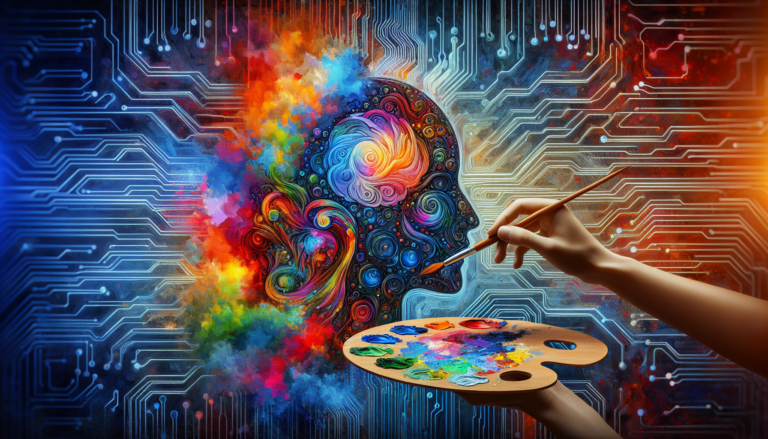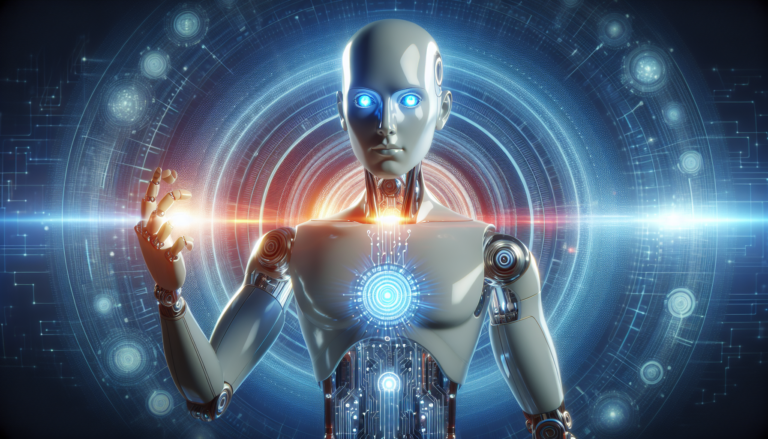In the fascinating world of technology, there exists a concept that has captivated the minds of scientists, researchers, and enthusiasts alike – artificial intelligence. This concept, often referred to as AI, has become the driving force behind numerous technological advancements in recent years. Artificial intelligence can be defined as the simulation of human intelligence in machines that are programmed to think, learn, and problem-solve like humans do. Its potential to revolutionize industries from healthcare to transportation is nothing short of extraordinary. Join us on a journey as we delve into the depths of this captivating subject and unlock the secrets behind the concept of artificial intelligence.
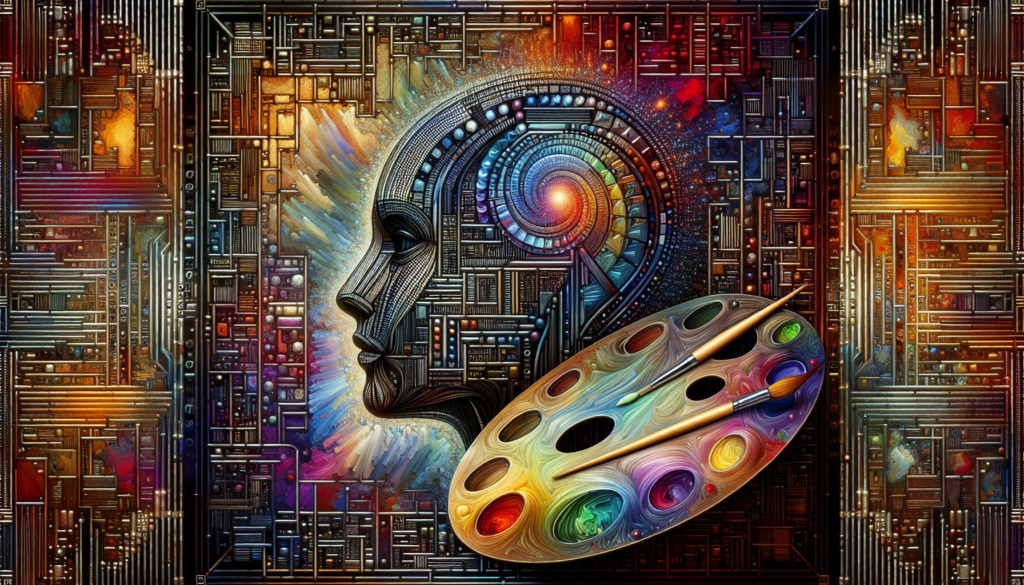
Artificial Intelligence Definition
Artificial Intelligence (AI) refers to the simulation of human intelligence in machines that are programmed to think and learn, allowing them to perform tasks that would typically require human intelligence. It involves the development of computer systems that can analyze data, make decisions, and solve problems without explicit human intervention.
Definition of Artificial Intelligence
Artificial Intelligence can be defined as the field of study that focuses on developing computer systems capable of performing tasks that would normally require human intelligence, such as visual perception, speech recognition, decision-making, and problem-solving. AI systems aim to emulate human intelligence by employing techniques like machine learning, natural language processing, and computer vision.
History of Artificial Intelligence
The concept of Artificial Intelligence can be traced back to ancient times, but it gained significant attention in the mid-20th century when scientists began exploring the possibility of creating machines that can mimic human intelligence. In 1956, the field of AI was established during the Dartmouth Conference, where researchers gathered to discuss the potential of creating machines that can think and learn.
Over the years, AI research progressed, leading to the development of various techniques and algorithms. The early focus was on developing “expert systems” that could replicate human decision-making in specific domains. However, the field faced several setbacks and experienced what is now known as the “AI winter” in the 1970s and 1980s.
The resurgence of AI came in the 1990s with advancements in machine learning algorithms and improved computational power. This period witnessed breakthroughs in areas such as deep learning, which enabled computers to process vast amounts of data and make more accurate predictions. Today, AI has become an integral part of our lives, with applications ranging from voice assistants to autonomous vehicles.
Types of Artificial Intelligence
Narrow AI
Narrow AI, also known as Weak AI, refers to AI systems that are designed to perform specific tasks or solve particular problems within a limited domain. These systems excel in a specific area but lack general intelligence. Examples of narrow AI can be seen in voice assistants like Siri or Alexa, which can understand and respond to user commands but cannot exhibit human-like intelligence in other areas.
General AI
General AI, also known as Strong AI or Artificial General Intelligence (AGI), is an AI system that possesses the ability to understand, learn, and apply its intelligence across a wide range of tasks, similar to how a human can. This type of AI would exhibit human-like intelligence and be able to perform any intellectual task that a human can do.
While General AI is the goal of many researchers, it is still largely theoretical and has not been fully achieved. Achieving General AI would require the development of machines capable of not only performing tasks but also understanding context, reasoning, and adapting to new situations.
Superintelligent AI
Superintelligent AI refers to an AI system that surpasses human intelligence in virtually every aspect. This type of AI, if realized, would have intellectual capabilities far beyond what humans can comprehend. Speculations about the development of superintelligent AI raise concerns about the potential impact on society and the need for careful regulation and control.
Applications of Artificial Intelligence
Machine Learning
Machine Learning is a subset of AI that focuses on enabling systems to learn and improve from experience without being explicitly programmed. It involves the development of algorithms that allow machines to analyze and interpret large amounts of data, recognize patterns, and make data-driven predictions or decisions. Machine Learning has found applications in various fields, such as healthcare diagnostics, fraud detection in finance, and personalized recommendations in e-commerce.
Natural Language Processing
natural language processing (NLP) is a branch of AI that deals with how computers can understand, interpret, and generate human language. NLP enables machines to comprehend and respond to human language, whether written or spoken. Applications of NLP range from language translation and sentiment analysis to chatbots and voice recognition systems. NLP has revolutionized human-computer interaction, allowing users to interact with machines in a more natural and intuitive way.
Computer Vision
Computer Vision refers to the ability of machines to interpret and understand visual information from images or videos. It involves the development of algorithms that enable machines to analyze and recognize patterns, objects, and even emotions from visual data. Computer Vision has numerous applications, including facial recognition, object detection, autonomous driving, and medical imaging analysis. It has significantly advanced fields like robotics, surveillance, and healthcare diagnostics.
Benefits of Artificial Intelligence
Automation of Repetitive Tasks
One of the key benefits of AI is its ability to automate repetitive and mundane tasks, freeing up human resources for more creative and complex work. AI-powered systems can analyze and process large volumes of data, perform routine tasks with precision, and improve overall efficiency. This automation can be seen in industries such as manufacturing, customer service, and data analysis, where AI is streamlining operations and reducing the need for manual intervention.
Improved Accuracy and Efficiency
AI systems can process vast amounts of data quickly and accurately, surpassing human capabilities in terms of speed and precision. This improved accuracy can be seen in various applications, such as medical diagnostics, where AI algorithms can analyze medical images and detect abnormalities more reliably than human experts. Additionally, AI-powered systems can assist in complex decision-making processes by considering numerous factors and making data-driven recommendations.
Enhanced Decision-Making
AI systems have the potential to enhance decision-making by providing valuable insights and predictions based on vast amounts of data. With the ability to process and analyze data at a scale impossible for humans, AI can identify patterns, trends, and correlations that may not be apparent to human observers. This can be beneficial in fields such as finance, where AI algorithms can analyze market trends and make investment recommendations, or in healthcare, where AI can assist in diagnosing diseases and suggesting treatment plans.
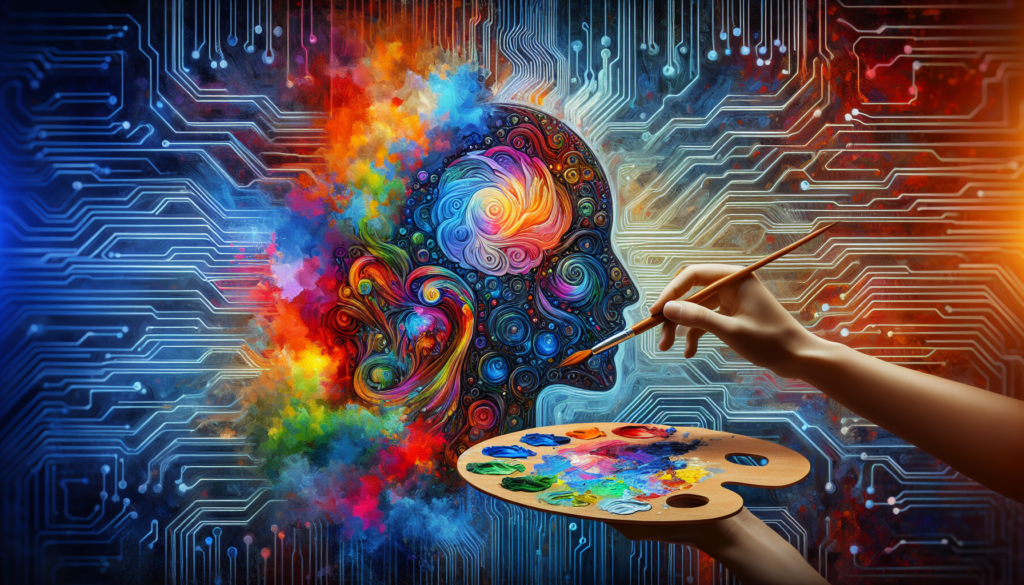
Challenges of Artificial Intelligence
Ethical Concerns
The rapid advancement of AI raises ethical concerns regarding how AI systems should be developed and used. Questions arise about the ethical responsibility of AI developers and the potential consequences of AI systems making decisions that impact human lives. Issues such as autonomous weapons, privacy invasion, and AI bias require careful consideration and the establishment of ethical guidelines to ensure AI is developed and deployed in a responsible and beneficial manner.
Job Displacement
The rise of AI and automation has raised concerns about job displacement and the impact on the workforce. While AI may automate repetitive tasks and lead to increased efficiency, it could potentially replace certain job roles altogether. The fear of job loss has sparked discussions on retraining the workforce, creating new job opportunities, and ensuring a smooth transition in the face of technological advancements. Collaboration between humans and AI is emerging as a potential solution, where AI systems assist humans rather than replacing them entirely.
Security Risks
The increased reliance on AI systems in critical sectors presents security risks that need to be addressed. As AI systems are integrated into various industries, there is an elevated risk of cyber-attacks that could compromise their functionality or misuse the data they process. Ensuring the security and integrity of AI systems is crucial to prevent potential breaches or unauthorized access. Robust cybersecurity measures, regular updates, and adherence to best practices are essential to mitigate these security risks.
AI in Various Industries
Healthcare
Artificial Intelligence has made significant contributions to the healthcare industry, improving diagnostics, treatment, and patient care. AI-powered systems can analyze vast amounts of patient data, predict diseases, and suggest personalized treatment plans. Additionally, AI can support medical professionals in image analysis, early detection of diseases, and precision medicine. The integration of AI in healthcare has the potential to save lives, improve patient outcomes, and alleviate the burden on healthcare professionals.
Finance
The finance industry has also benefited from AI applications, particularly in the areas of fraud detection, risk assessment, and algorithmic trading. AI algorithms can analyze large volumes of financial data to identify patterns and anomalies, helping to detect fraudulent activities and minimize financial risks. Additionally, AI-driven trading systems can make rapid decisions based on market trends and optimize investment strategies. The use of AI in finance is enhancing efficiency, reducing costs, and improving accuracy in decision-making processes.
Transportation
The transportation industry is undergoing a significant transformation with the integration of AI technologies. AI-powered autonomous vehicles have the potential to revolutionize transportation by reducing accidents, improving traffic flow, and enhancing overall safety. AI algorithms can analyze real-time traffic data, predict congestion, and optimize route planning. Furthermore, AI is being used in delivery logistics, predictive maintenance, and passenger experience personalization. The use of AI in transportation aims to create more efficient and sustainable systems that cater to the needs of individuals and society.
Impact of Artificial Intelligence on Society
Economic Impact
The widespread adoption of AI is expected to have a profound impact on the global economy. While AI has the potential to boost productivity, increase efficiency, and create new job opportunities, it also poses challenges in terms of job displacement and income inequality. The reorganization of the labor market, retraining of workers, and policy frameworks to manage these transitions are critical to ensure the societal and economic benefits of AI are realized in a balanced and inclusive manner.
Social Impact
AI technology has the potential to impact various aspects of society, ranging from daily interactions to social governance. The use of AI-powered chatbots and virtual assistants is becoming increasingly prevalent, changing the way we interact with technology and each other. Social networks, online platforms, and public services are leveraging AI algorithms to personalize user experiences and offer tailored recommendations. The social impact of AI needs to be carefully monitored to ensure privacy, fairness, and accountability in its deployment and usage.
Legal and Policy Implications
The rapid advancement of AI has raised legal and policy concerns that need to be addressed to ensure the responsible development and deployment of AI systems. Issues such as intellectual property rights, liability for AI-generated decisions, and privacy protection require legal frameworks to govern AI-related activities. Policymakers and regulatory bodies need to collaborate with experts to establish guidelines, standards, and regulations that promote the responsible use of AI while safeguarding the rights and interests of individuals and society as a whole.
Ethical Considerations in Artificial Intelligence
Transparency of Algorithms
The transparency of AI algorithms is crucial to ensure accountability and trust in their decision-making processes. It is essential to establish mechanisms that enable humans to understand and interpret the reasoning behind AI-generated outcomes. Transparent algorithms would facilitate the identification of biases or errors and allow for better oversight and regulation of AI systems.
AI Bias
AI algorithms learn from data, and if the data used for training is biased or incomplete, it can lead to biased AI outcomes. Bias can manifest in various forms, such as gender, racial, or socioeconomic bias. Recognizing and addressing biases in AI systems is essential to ensure fairness and prevent unjust discrimination. ethical considerations need to be given to the data used for training, the development of diverse datasets, and continuous monitoring of AI systems for potential biases.
Privacy and Data Protection
The use of AI often involves the processing and analysis of large amounts of personal data. It is crucial to implement robust privacy and data protection measures to safeguard individuals’ privacy and prevent unauthorized access or misuse of personal data. Ethical considerations must be given to data collection, consent, transparency in data usage, and adherence to data protection regulations to build trust and ensure responsible deployment of AI systems.
Artificial Intelligence and Human Interaction
Human-Machine Collaboration
Rather than viewing AI as a replacement for humans, there is growing interest in exploring how AI can augment human capabilities and enable more effective collaboration. Combining human judgment, creativity, and empathy with AI’s computational power and analytical capabilities can lead to more insightful decision-making and problem-solving. AI can assist humans by automating repetitive tasks, providing data-driven insights, and enabling humans to focus on higher-level thinking and creativity.
Potential Future Threats
While AI offers immense potential, concerns about potential future threats have been raised. Speculations about the development of superintelligent AI, which surpasses human capabilities, raise questions about control and the potential impact on human society. Ensuring that AI development remains aligned with human values, and establishing safeguards against potential misuse or unintended consequences, is essential to mitigate future threats.
Future Trends in Artificial Intelligence
Advancements in Robotics
Continued advancements in AI are expected to lead to significant progress in the field of robotics. AI-powered robots have the potential to perform complex physical tasks, interact with humans in a more nuanced manner, and navigate real-world environments autonomously. The integration of AI and robotics can revolutionize industries such as manufacturing, healthcare, and agriculture, leading to increased productivity and efficiency.
AI-driven Automation
The automation capabilities of AI are likely to expand further, with AI systems taking on increasingly complex tasks. As AI algorithms continue to improve, they can be applied to a wider range of industries and domains. Business processes, customer service, logistics, and other areas will benefit from AI-driven automation, allowing for streamlined operations, reduced costs, and increased productivity.
Integration with Internet of Things
The integration of AI with the Internet of Things (IoT) holds great potential for creating more intelligent and connected systems. AI algorithms can analyze data generated by connected devices, enabling predictive maintenance, real-time monitoring, and personalized experiences. The combination of AI and IoT has the power to transform industries such as healthcare, energy, and smart cities, leading to more efficient and sustainable solutions.
As AI continues to evolve and expand its reach, it is crucial to remain cognizant of the ethical considerations, societal impacts, and legal frameworks required for responsible AI development. By harnessing the power of AI in a responsible and inclusive manner, we can unlock its full potential to improve lives, drive economic growth, and shape a better future.




